I’ve been wanting to see the SS United States, which has been docked in Philadelphia since 1996, for many years. The SS United States is a fascinating ship. One of the last great ocean liners built, setting sail in 1952 and maintaining line service for only 9 years before starting cruises in 1961. It is still the holder of the Blue Riband for the fastest transatlantic crossing. I once saw it from a plane, landing at Philadelphia International Airport on a flight from Prague in 2019. But with its location in the Port of Philadelphia (across from IKEA), it never seemed practical to stop by and visit. After all, it seemed like the ship was always going to be there.
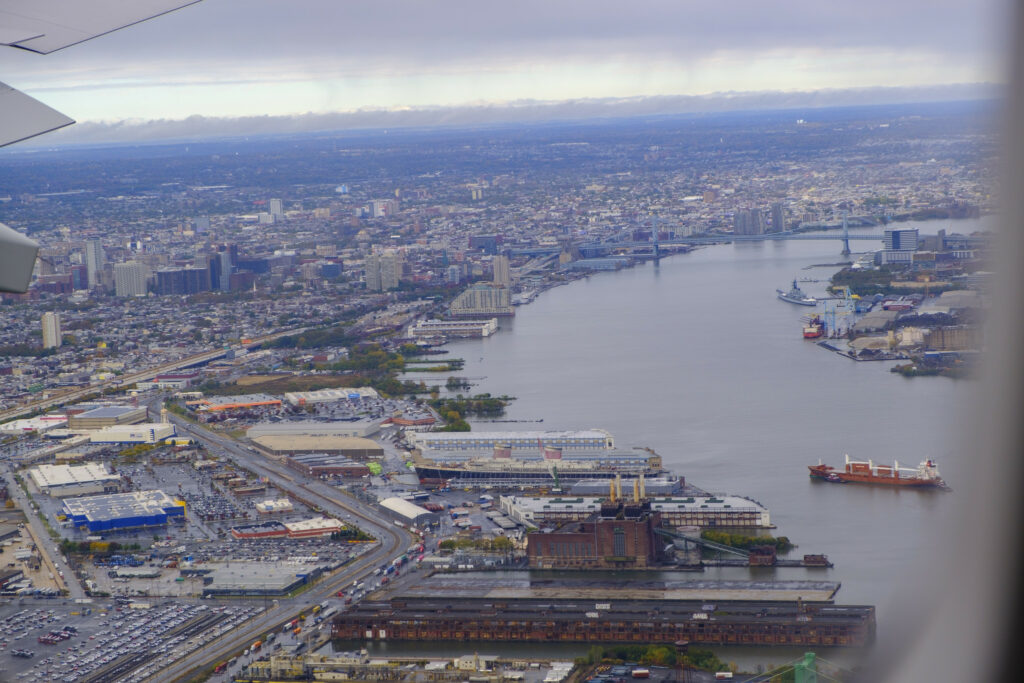
But that all changed this year, when the ship was evicted from its dock by Penn Warehousing, which owns Pier 82. I hadn’t followed the story about the ship’s status too closely over the years, but it seems like the writing was on the wall when their docking fees were more than doubled in 2021. By October it was clear that the plans to stop the eviction failed, and once that SS United States Conservancy signed an agreement with Okaloosa County in Florida to transfer ownership to them and sink it as an artificial reef, I started making plans to visit the ship before it’s gone. Rumors spread that the SS United States may be gone as soon as Friday, October 24th. I was skeptical – I can’t imagine that an old ship that has been sitting in dock for 28 years can just be towed hundreds of miles to Norfolk Mobile, Alabama (where it’s supposed to be stripped and prepared for sinking) on short notice. And rightly so — as of this writing on October 27th the ship is still in Philly. However, this urgency prompted me to head down and see her before she is gone.
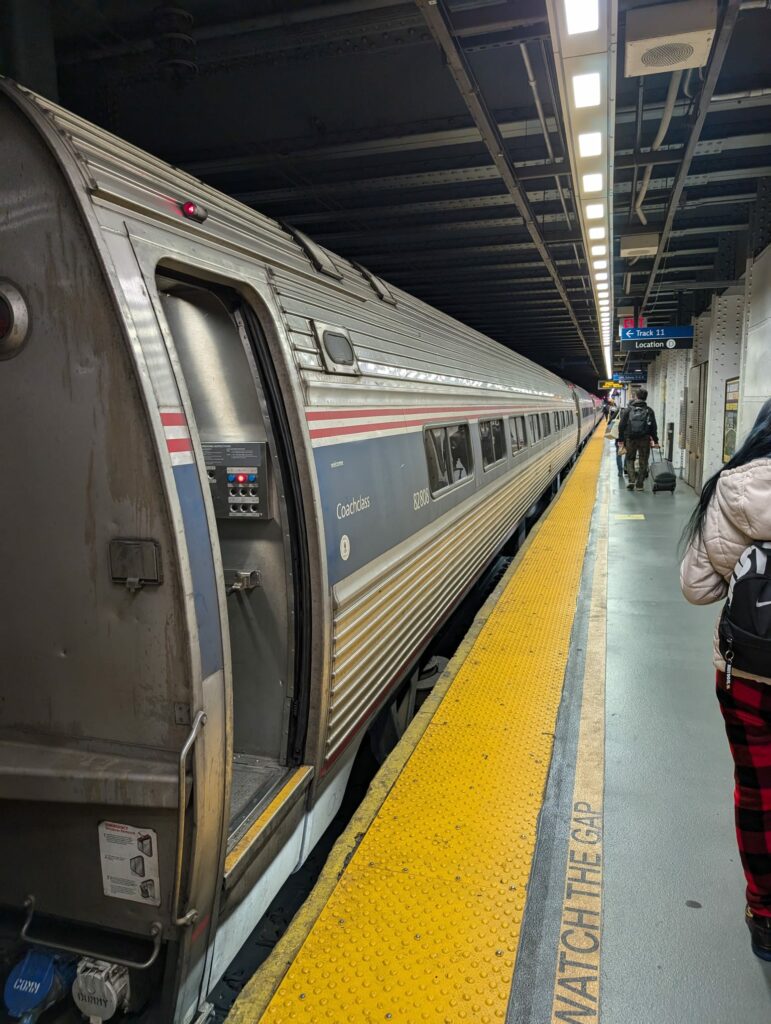
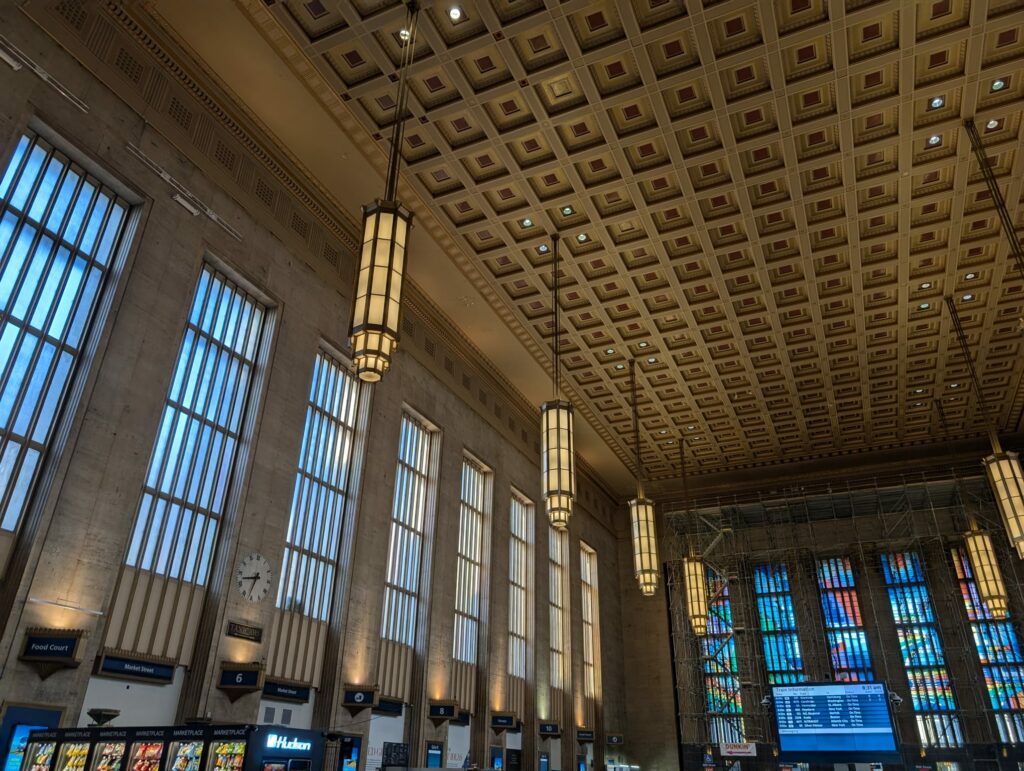
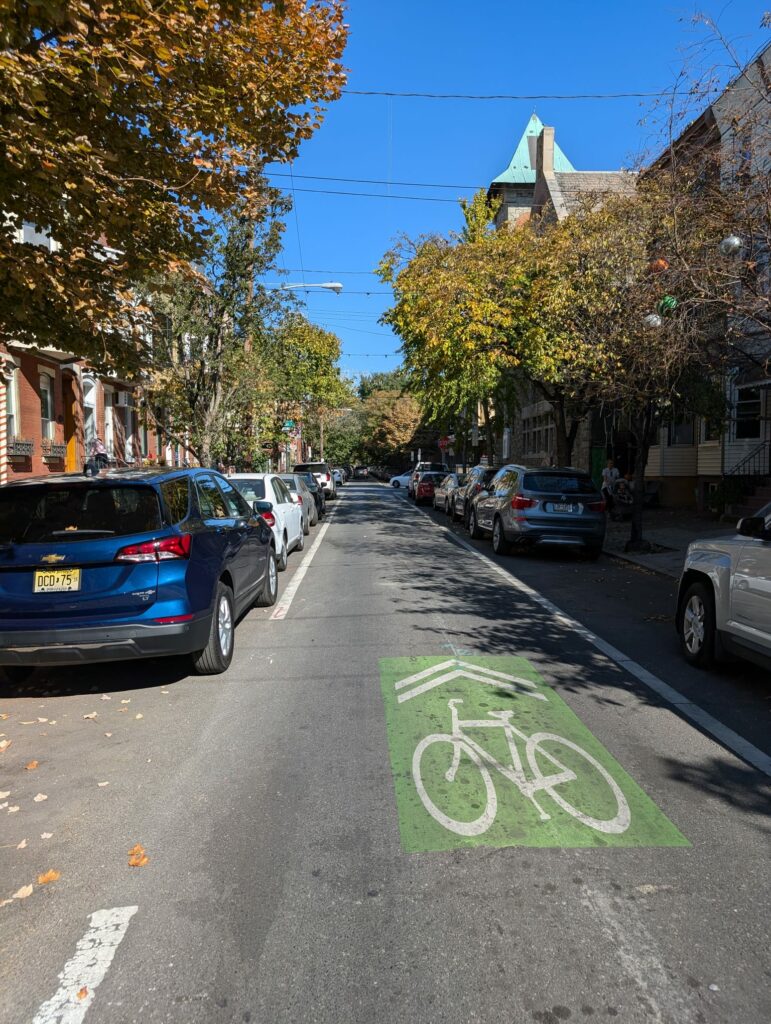
On Sunday October 20th I got on a 7am Keystone Service Amtrak train at Penn Station, and an hour and a half later I was at the beautiful Philadelphia 30th Street Station. I rode my Brompton on the quiet South Philadelphia streets toward the Port of Philadelphia. It was a sunny, slightly chilly Fall Sunday, and the streets were almost deserted. It was a beautiful ride, and I could notice the city slowly waking up – businesses starting to open, folks taking dogs for a morning walk, churches starting Sunday service. Somehow, every time I visit Philadelphia it’s a beautiful day, and this one was no different.
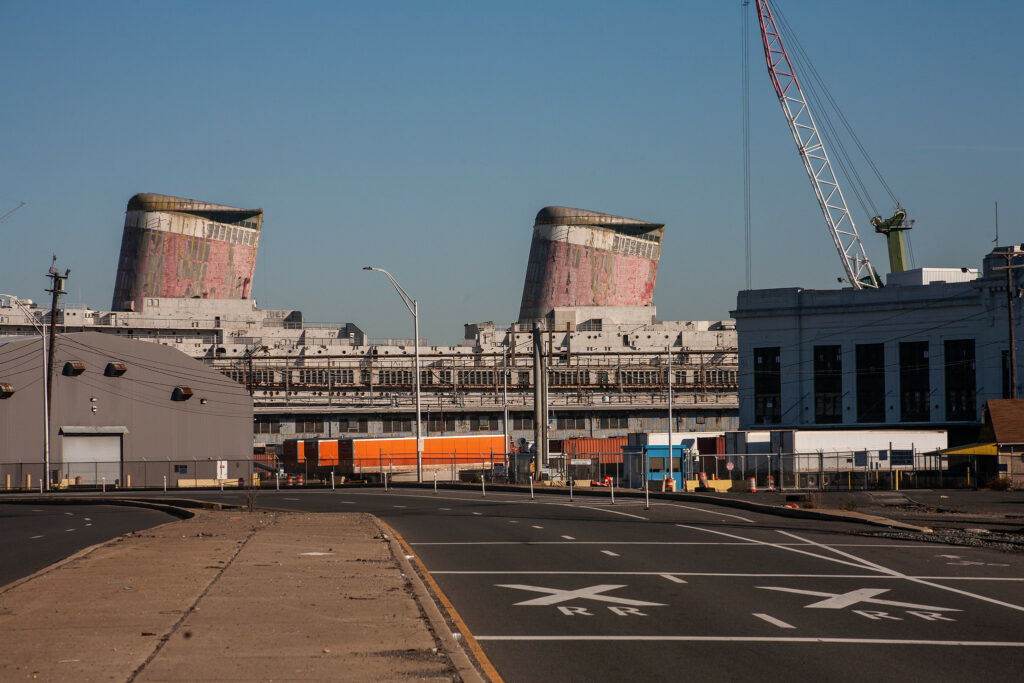
I slightly overshot the turn for Dock 84, so I ended up approaching the ship from the South. Its size was breathtaking! Its two large funnels dominate the sky and can be seen from far, far away.
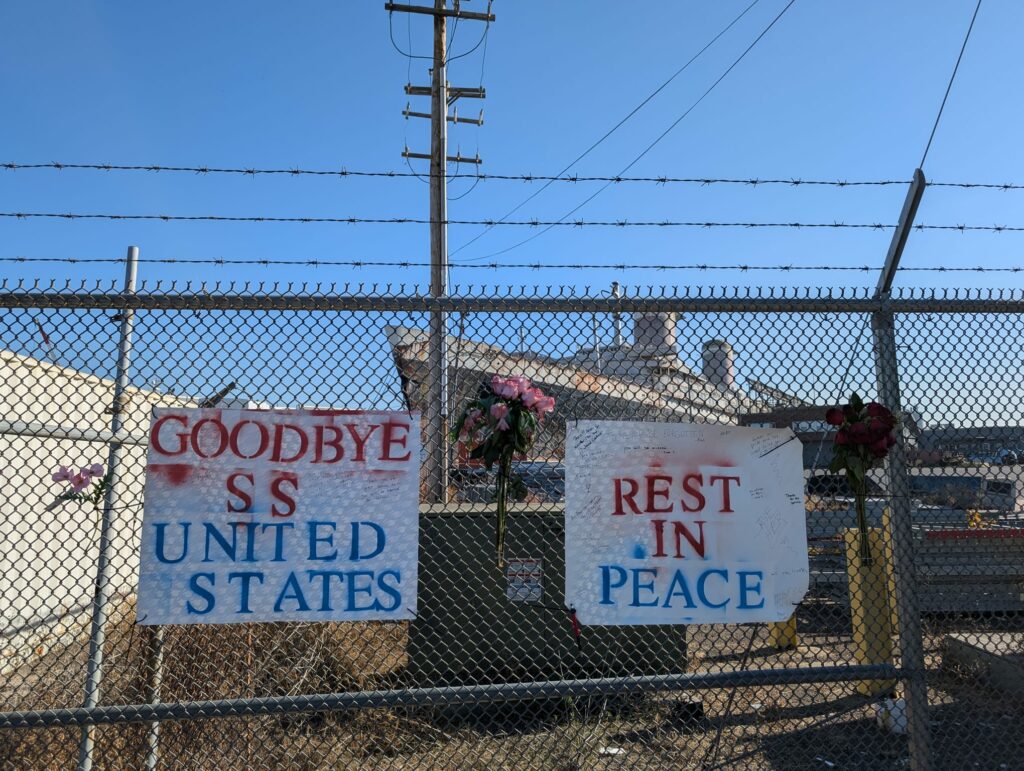
Once I reached the ship, I was faced by an expected obstacle. The pier is surrounded by fencing, and the owner did not facilitate any kind of viewing platform or access, not even now that the ship is departing after 28 years. This was unfortunate, but expected. There were a handful of other people who showed up this morning to say goodbye, and we traded tips on where to find tiny gaps in fencing that might be used to take better photos. A pair of somber goodbye signs and some flowers were attached to the central part of the fence.
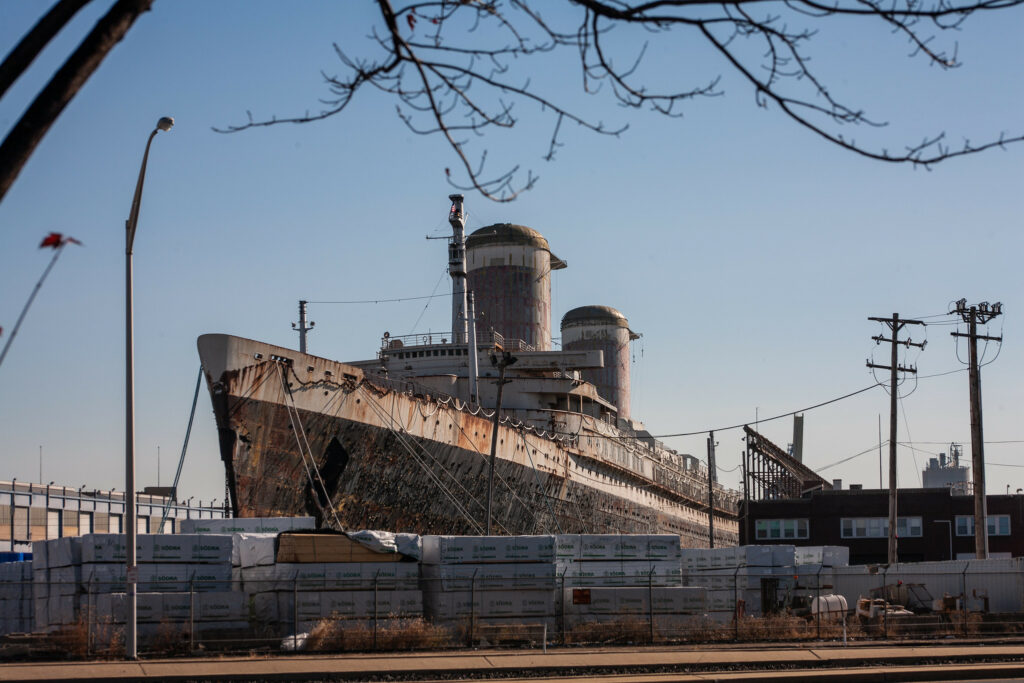
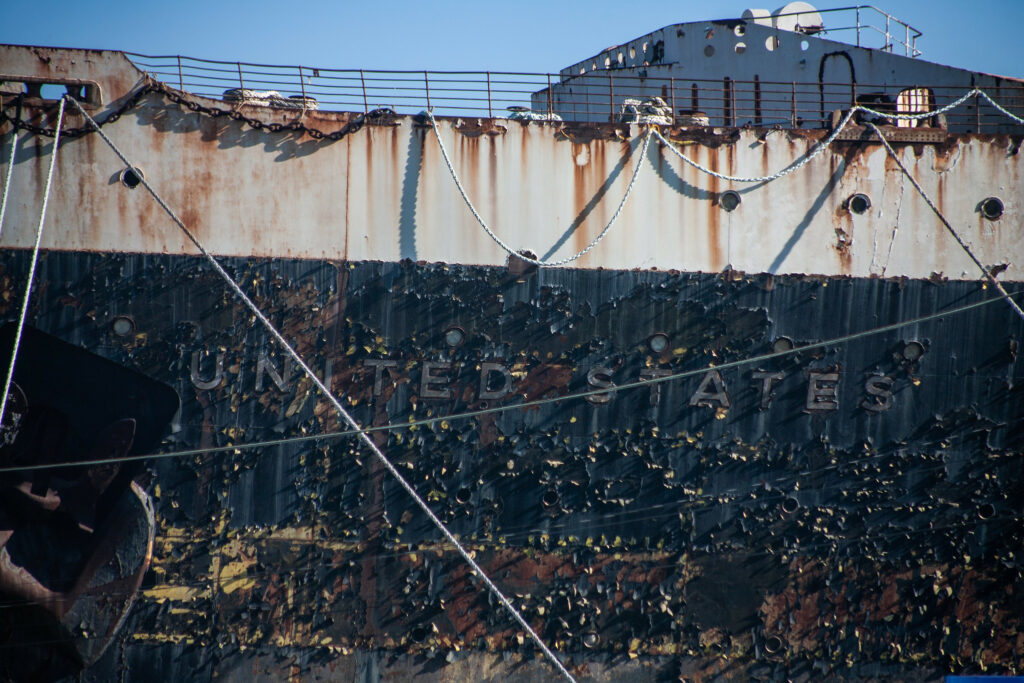
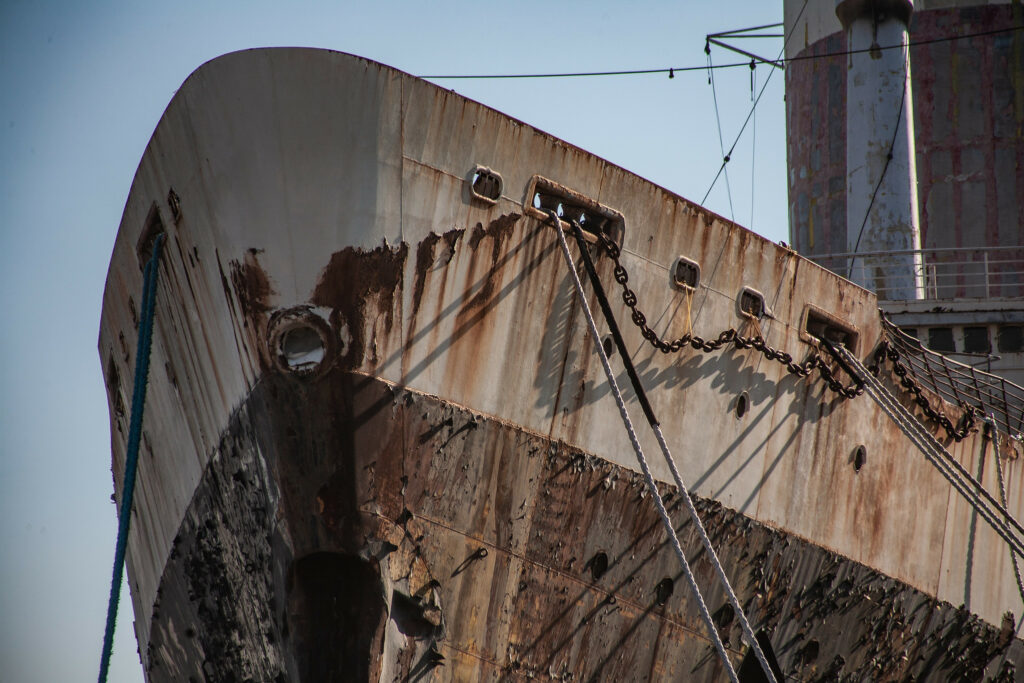
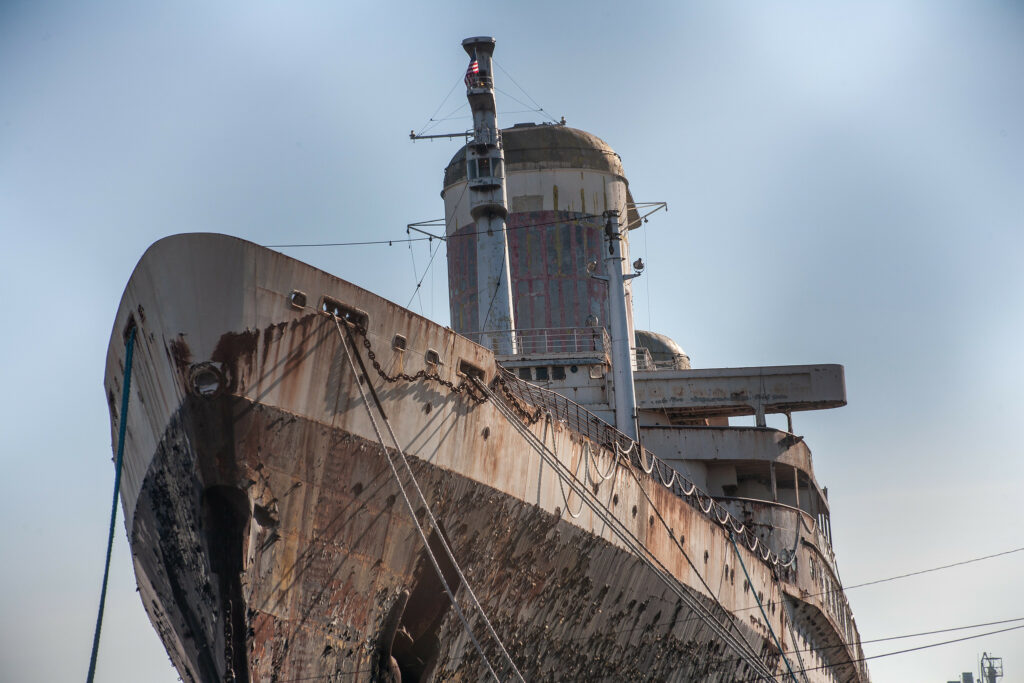
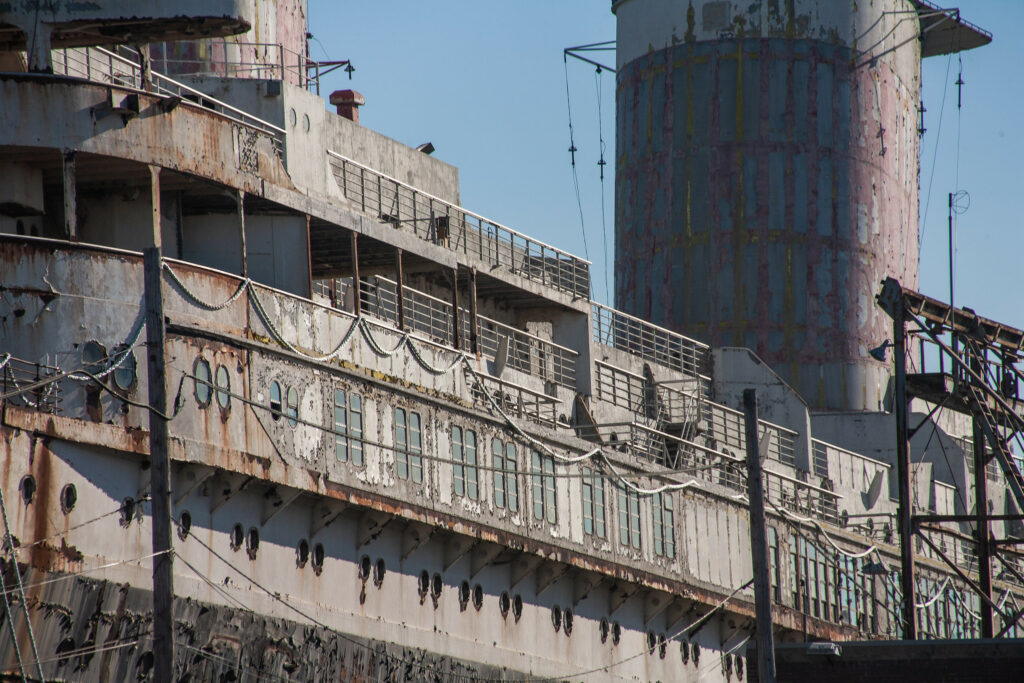
I carried 3 cameras with me – my Fuji XT-30 with a 27mm lens for wide shots, my trusty old Canon EOS 5D with a 75-300mm telephoto lens for closeups, and my even older EOS 3000v with a 28-135mm lens and expired Efke 25 film. The telephoto lens ended up being pretty good at taking photos through the fence.
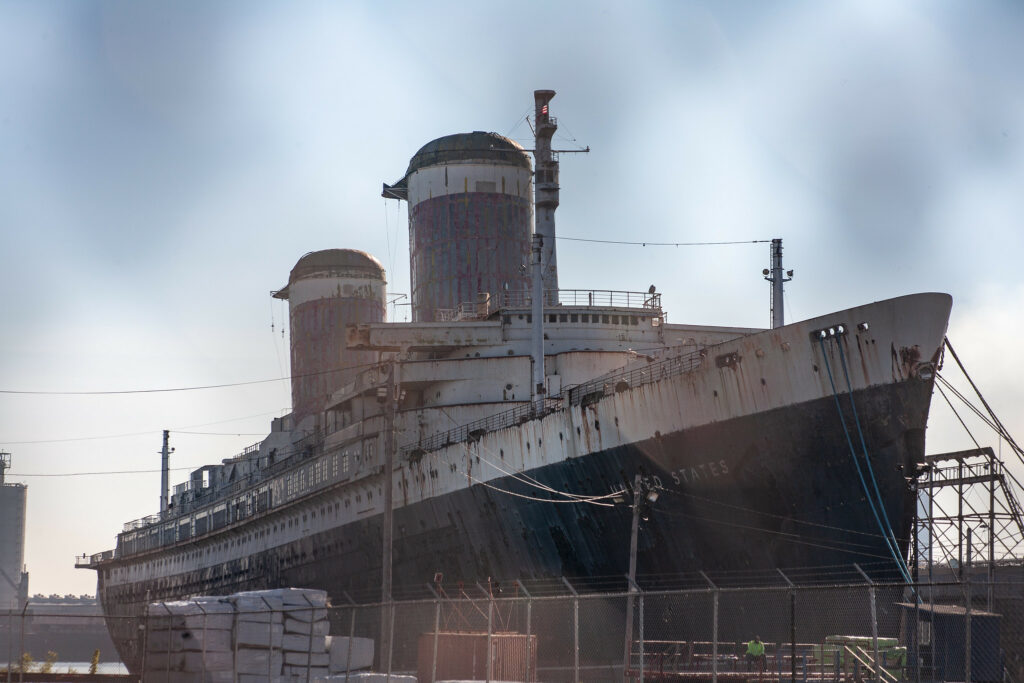
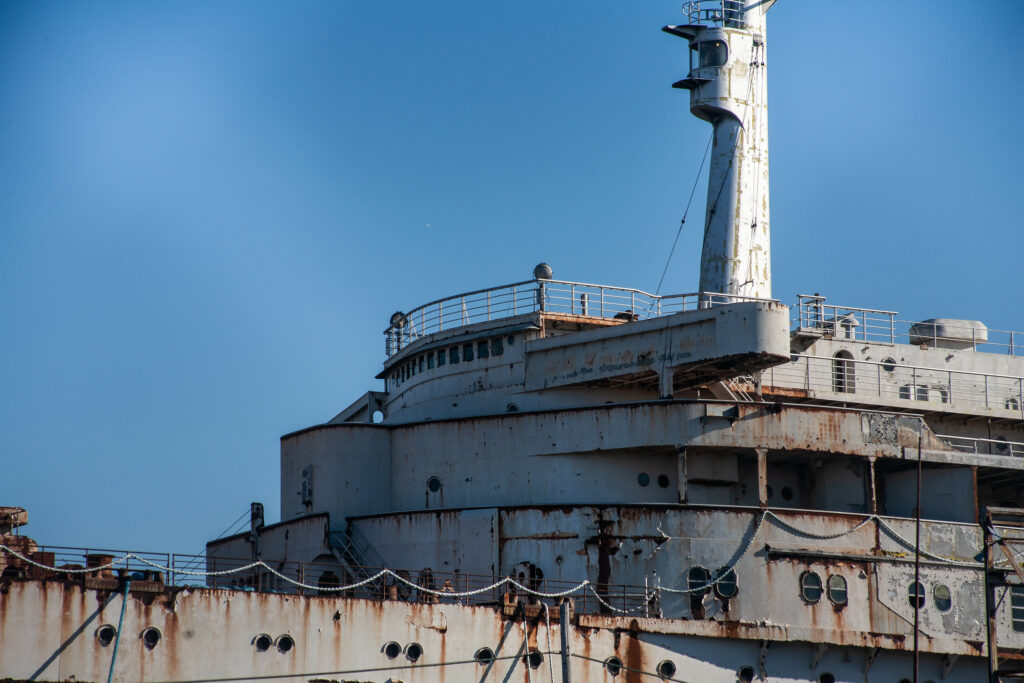
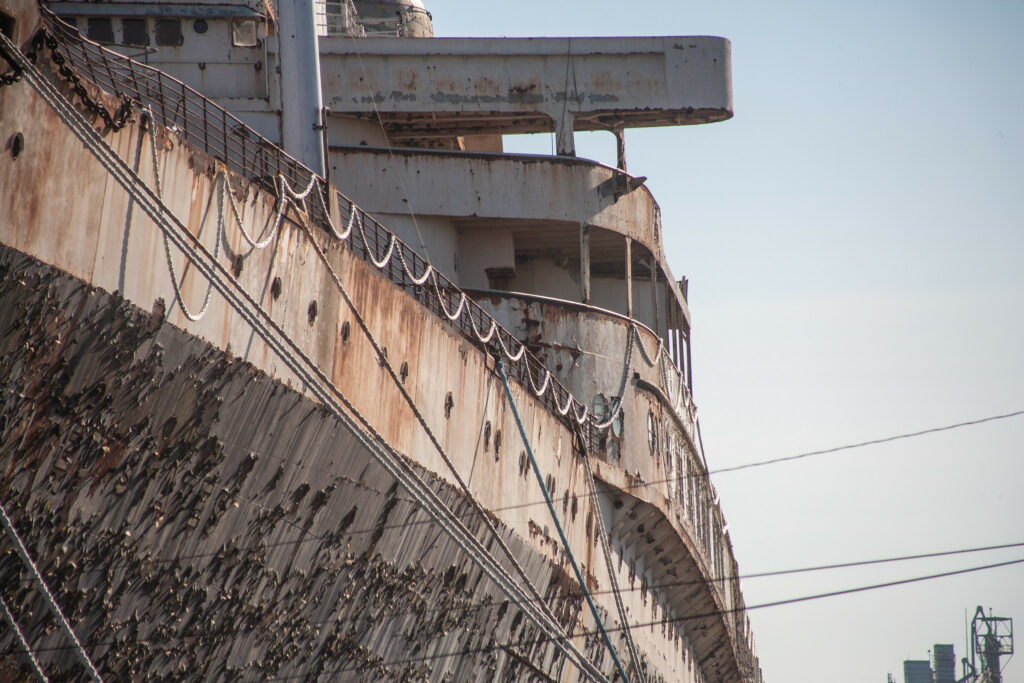
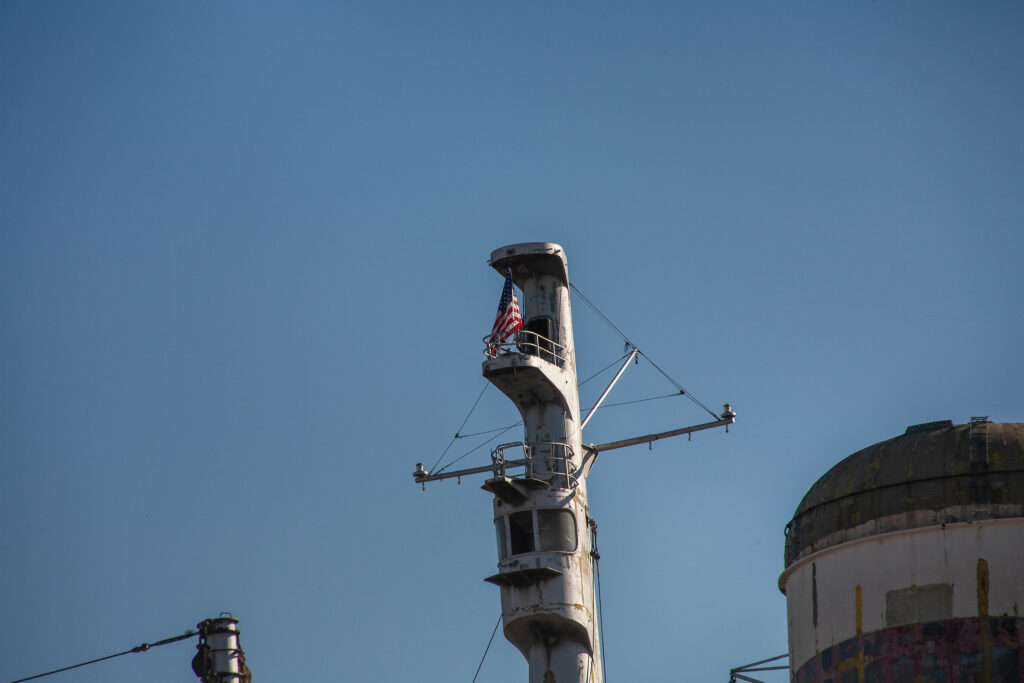
Sadly, the starboard side of the ship was barely visible through the fence, because of the mesh cover installed on that section. I couldn’t escape the feeling that Penn Warehousing actively wants to dissuade people from seeing the ship up close. It makes sense — they have obviously had a hostile relationship with the Conservancy, and want the ship gone. But it was still shocking to see how little effort there seems to be from any wider community or even governmental body to facilitate a proper goodbye to this historic American ship. When it was originally built, the US government covered two thirds of its manufacturing cost, because of their requirements for potential conversion into a troop ship. 70 years later, there isn’t even a hole in the fence or a viewing platform to say goodbye.
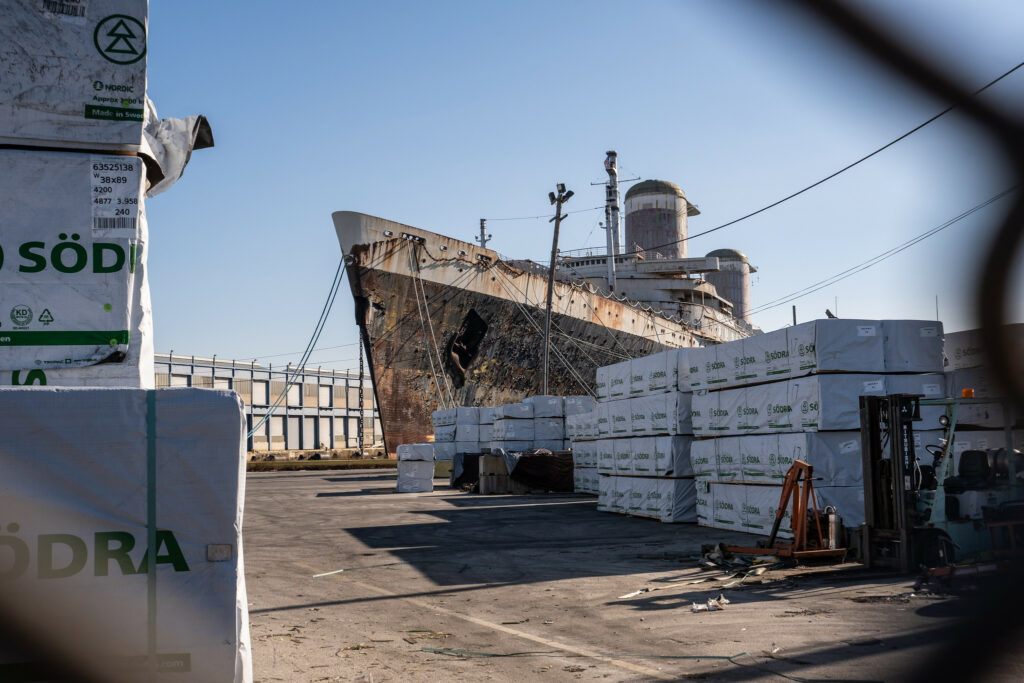
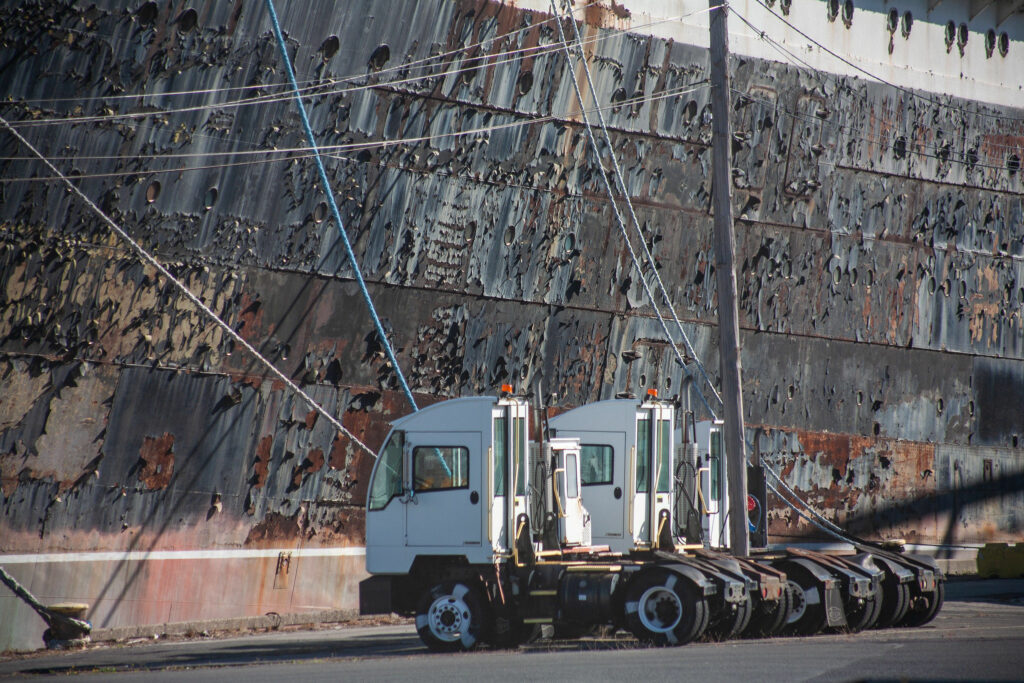
The pier itself was bustling with activity. Large trucks were moving materials around the dock every few minutes, and the view of the ship itself was often blocked not just by fencing, but also by large piles of pallets and containers.
In addition to the folks like me, taking photos through the fence from the street, I saw at least one drone as well as a person walking on the bow of the ship. I couldn’t tell if they were working on the ship, or if they got a highly coveted tour before she departs on her final journey.
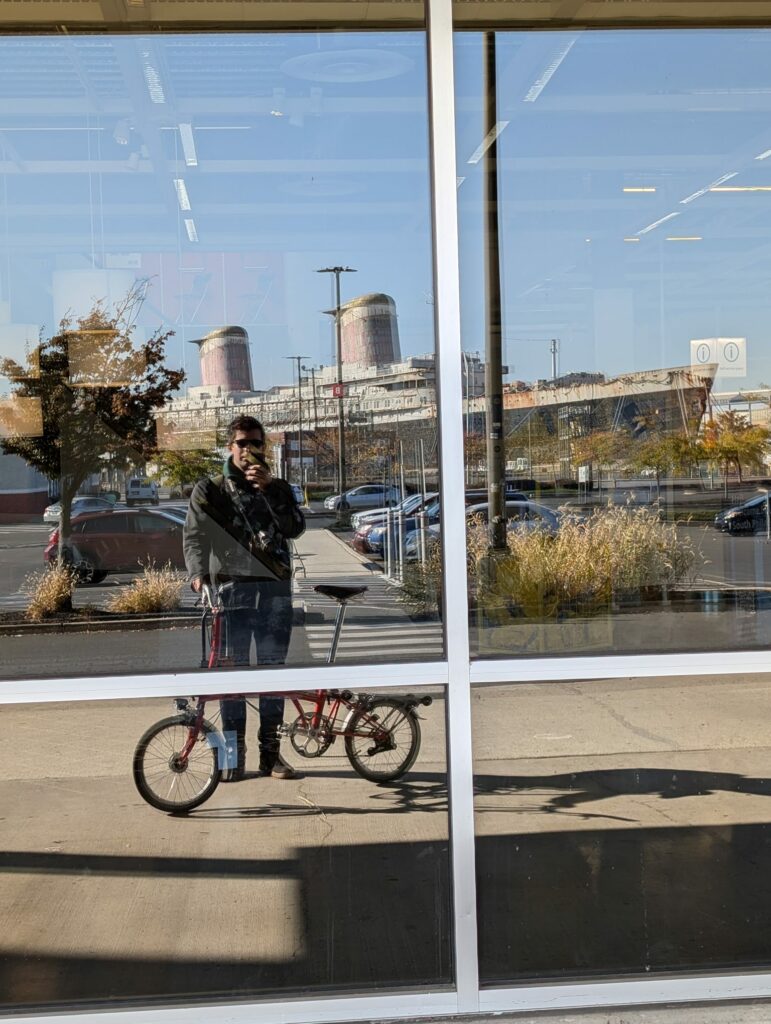
Seeing the ship up close was absolutely worth it. I’ve seen many photos and videos of it before, but you really have to see it in person to appreciate its size and clean lines. And staring directly at its bow you can see how narrow this enormous ship is! From what I understand, it was made to be narrower than its contemporaries in order to pass through the Panama Canal, and to help with speed. Its beam is 30.9 meters, compared to RMS Queen Mary’s 36 meters.
After an hour and a half of trying to capture the ship from every angle, I crossed the wide Columbus Road and headed to IKEA for some well earned meatballs. The view of the ship from the restaurant is absolutely stunning, and Philadelphians have been blessed with a unique view of maritime history while buying ready-to-assemble furniture.
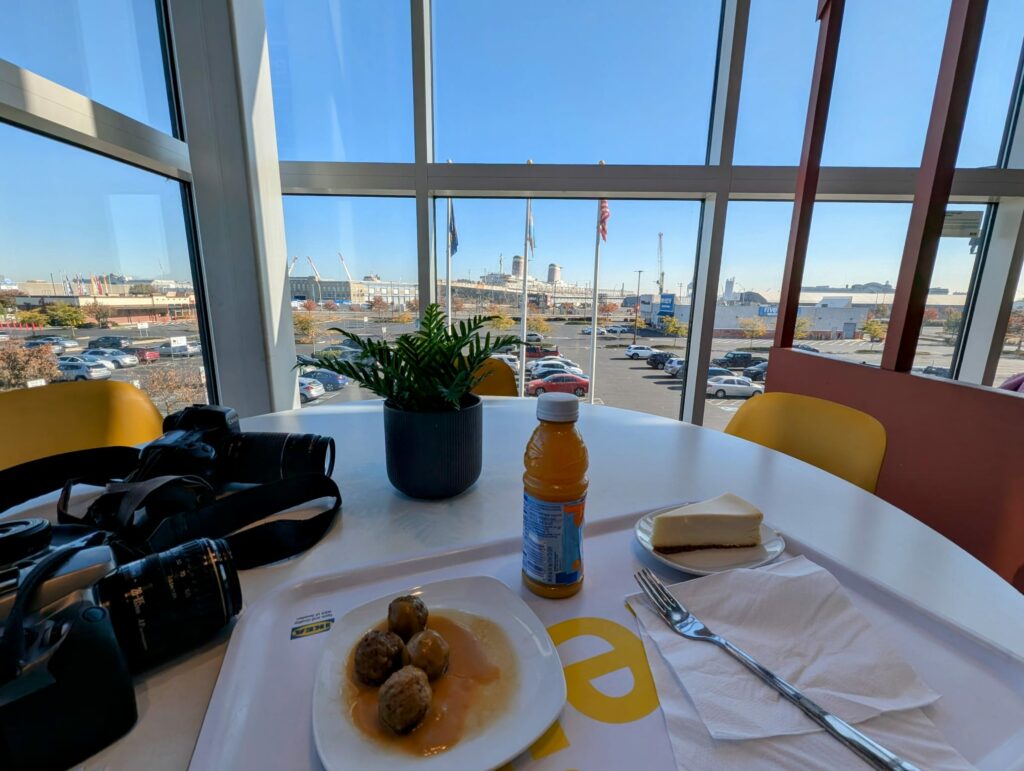
I said goodbye to the SS United States for what will likely be the last time. Though who knows? Maybe this departure will be postponed again, or maybe I’ll get to see her on the bottom of the ocean one day.
Before heading back to Brooklyn I met up with a friend whom I haven’t seen in many years. We walked the streets of Philadelphia for a few more hours. I finally got on a SEPTA train to Trenton, and then transferred to a NJ Transit train to Penn Station. While my 7am Amtrak ticket only cost me $15, the day-of tickets to NYC were 10 times more expensive, so I opted for the scenic route on local trains.
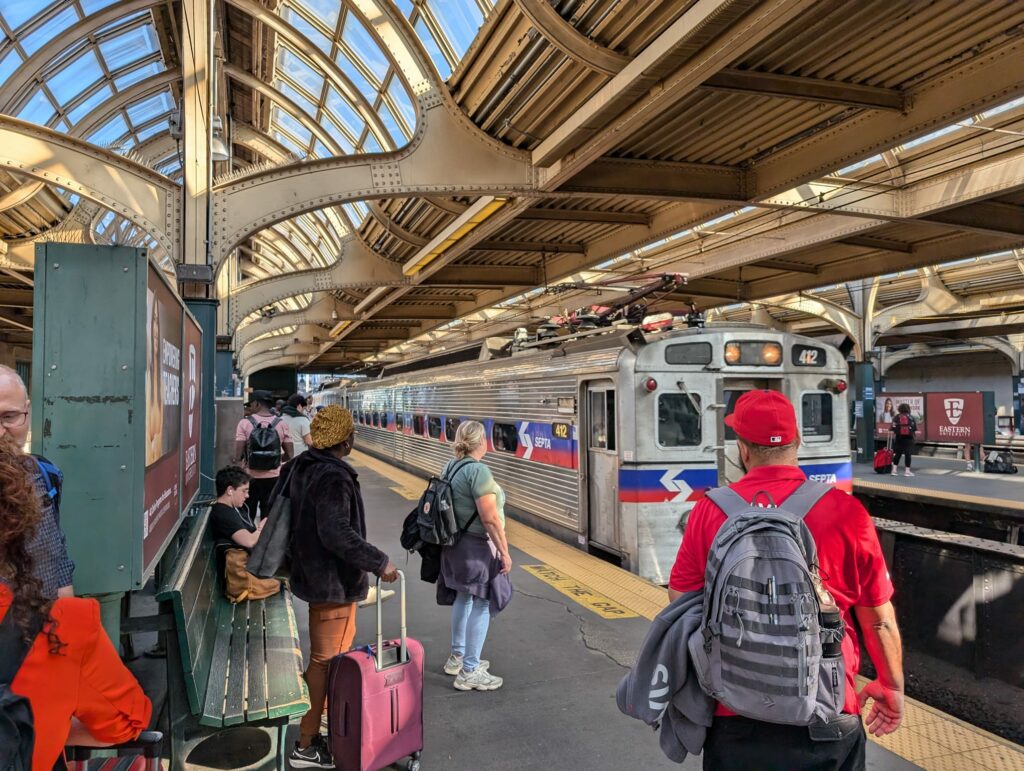
Speed is a funny thing. The SS United States was built to be the fastest ship out there, but even as she set sail at the dawn of the jet age, planes were poised to replace ocean liners as the means of travel between continents. She maintained service for 9 years, cruised for another 8 and has been virtually immobile for the last 50 years. As much as I would love to see this ship restored and preserved, I understand why that was always unlikely. Even the famous RMS Queen Mary has been struggling at its Long Beach home (I was lucky to visit it last year!) and I can imagine that its enormous costs serve as a cautionary tale for all cities that may consider adopting an aging ship.
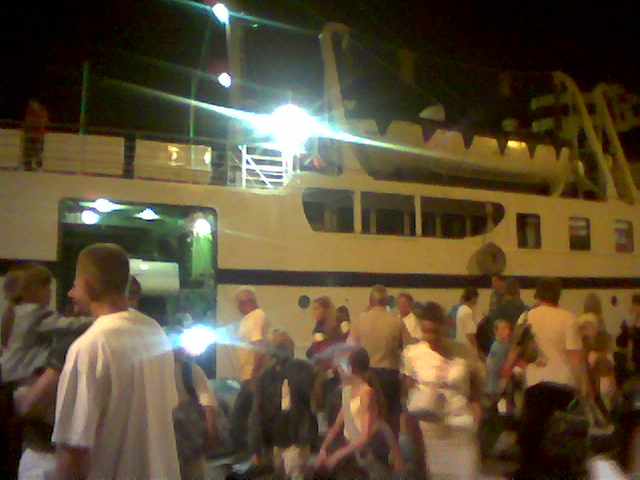
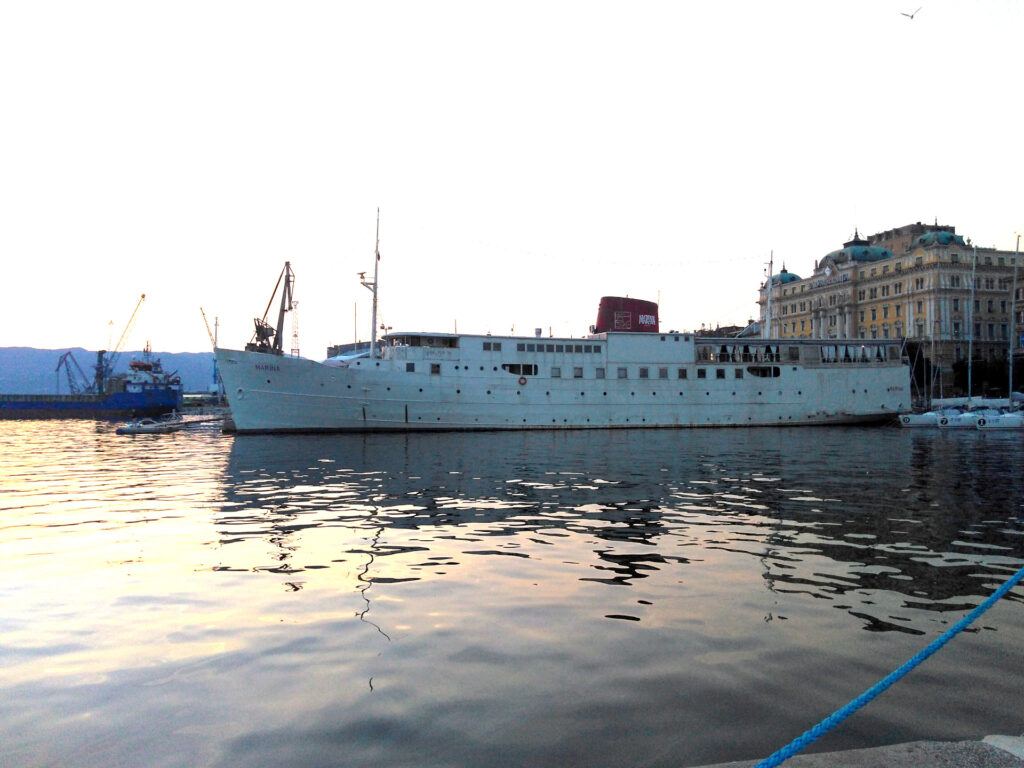
There are some more hopeful maritime preservation stories closer to where I come from. The M/V Marina, the Jadrolinija ferry built in 1936, was preserved as a hotel in Rijeka. I have fond memories of sailing on it between Zadar and Silba as a kid. I had dinner onboard a few years ago, and from what I can tell this conversion has been a success.
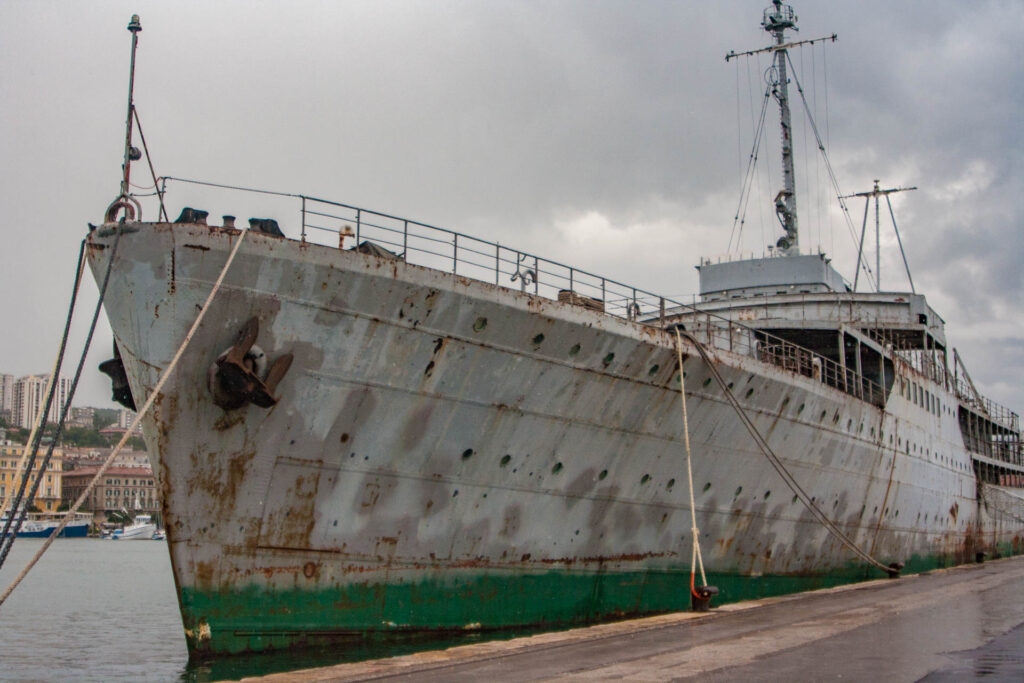
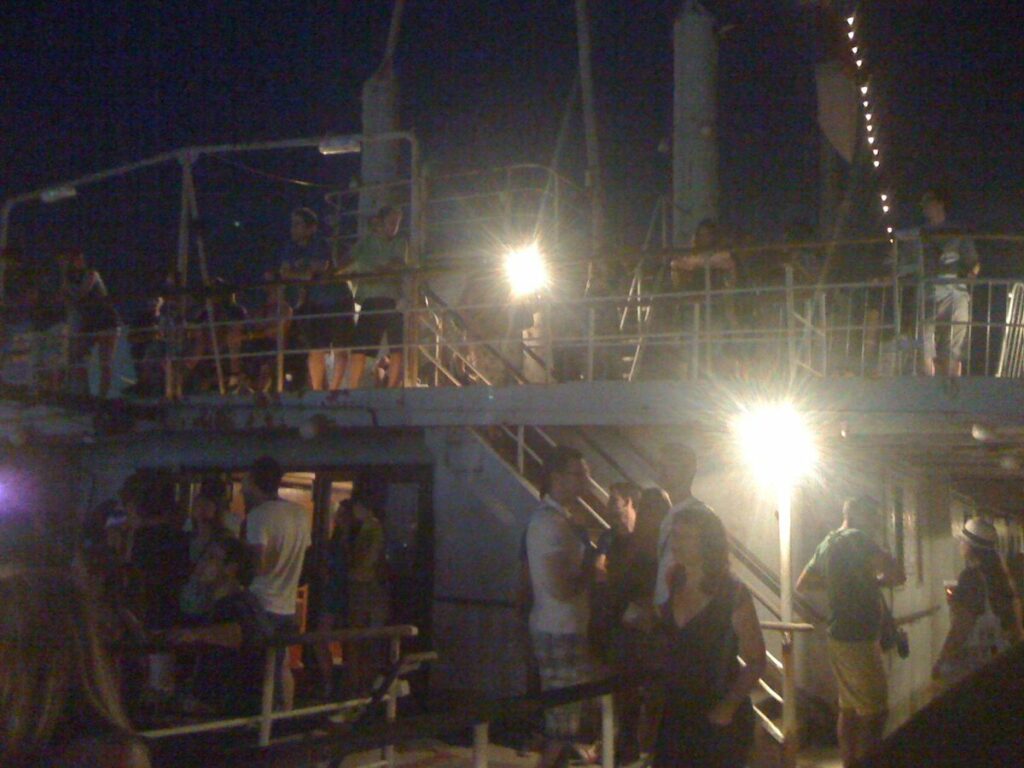
Another preservation effort is currently underway in Rijeka. After decades of uncertain future, Josip Broz Tito’s famous ship Galeb is currently under restoration to be open to the public as a museum ship. Also known as the the Peace Ship Galeb, this Yugoslav Navy training vessel served as Tito’s personal yacht on many around the world trips as one of the leaders of the Non-Aligned Movement. It has also been slowly deteriorating for the last few decades, mostly in Rijeka. But unlike the SS United States, it has seen adaptive use over the years. I visited the ship twice – once in 2011 for an exhibition of Yugoslav art, and again in 2013 when it served as one of the venues for the REPUBLIKA festival. It was protected by the Croatian Ministry of Culture in 2006, and its current restoration is primarily financed by European Union grants.
In the case of the SS United States, there doesn’t seem to be comparable public interest, nor funding to preserve it. While millions have likely seen the ship from the IKEA restaurant and parking lot, I understand why the pier owner wants it gone. And if it is turned into an artificial reef in the end, it will be a better end than going to a scrapyard.
You can see more photos from my visit to the SS United States on my Flickr.